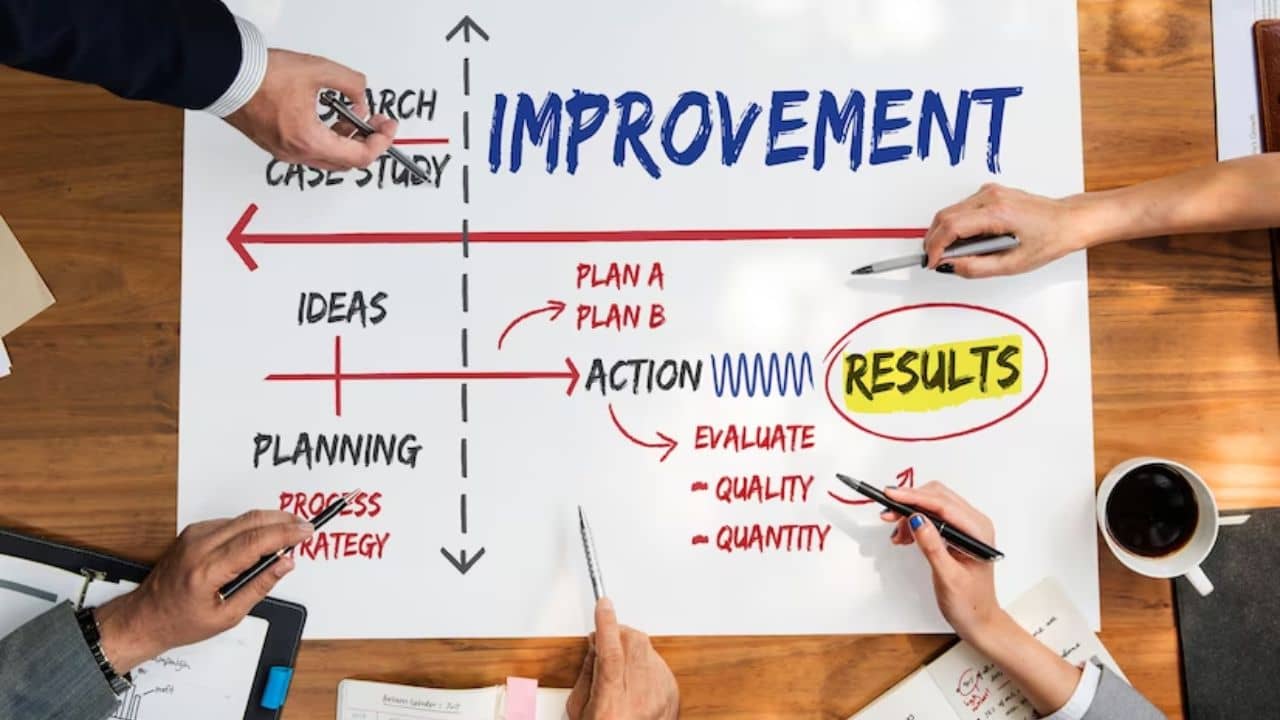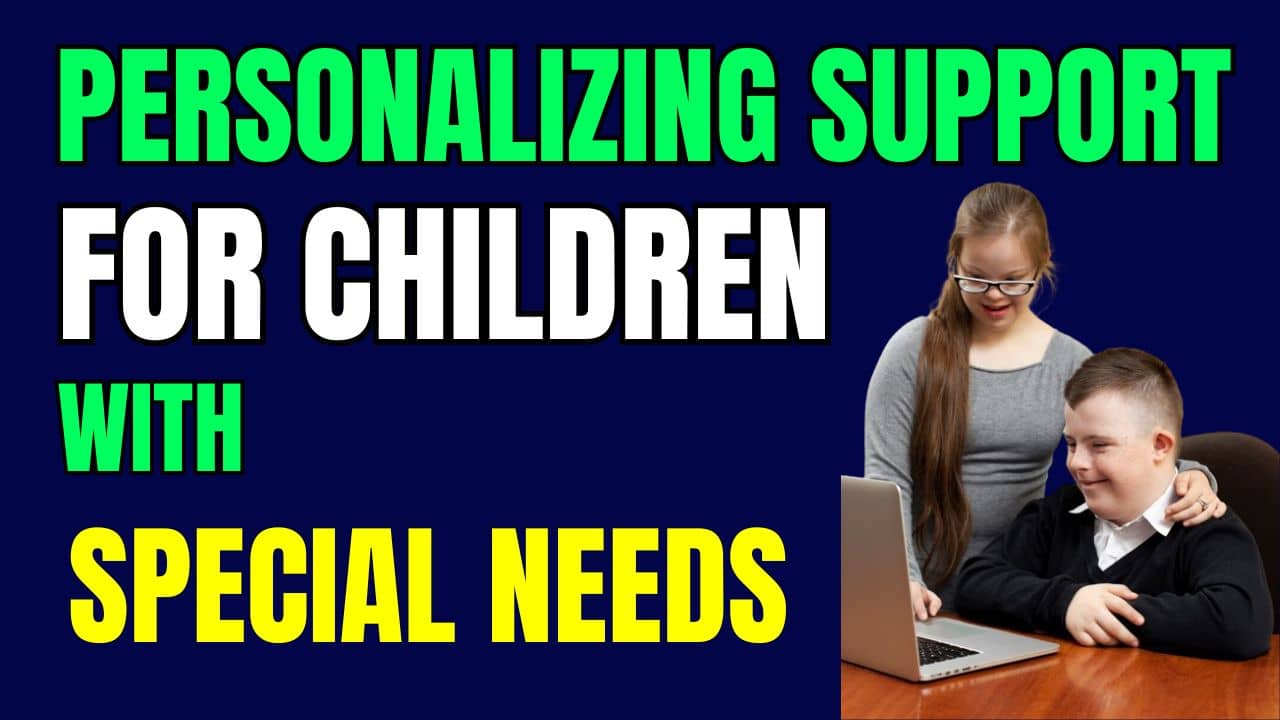Every child is unique, and this is especially true for children with special needs. They come with a diverse range of strengths, challenges, and learning styles. This beautiful individuality necessitates a crucial shift in how we approach their development and support. A “one-size-fits-all” approach simply won’t do.
In this blog post, we delve into the importance of customizing interventions for each special child’s specific needs. We’ll explore the benefits of personalized support, discuss key factors to consider when tailoring interventions, and offer practical resources to guide you on this journey of empowering every child to thrive.
1. Tailoring interventions to the child’s needs
Tailoring interventions to meet the specific needs of a child with Autism Spectrum Disorder (ASD) is essential for promoting meaningful progress and development. This chapter delves into the key considerations and strategies for customizing interventions to address each child’s unique strengths and challenges.
1. Individualized Assessment (Special Needs Interventions):
- Conduct a thorough assessment to identify the child’s strengths, preferences, and areas of challenge.
- Consider the child’s sensory sensitivities, communication style, and learning preferences.

2. Targeting Core Challenges:
- Identify and prioritize core challenges associated with ASD, such as communication deficits, social interaction difficulties, and sensory sensitivities.
- Tailor interventions address these core challenges directly while considering the child’s developmental level.
3. Aligning with Developmental Stage:
- Recognize the child’s developmental stage and tailor interventions to be developmentally appropriate.
- Consider the child’s chronological age, as well as their social, emotional, and cognitive development.
4. Incorporating Interests and Preferences:
- Integrate the child’s interests and preferences into interventions to enhance motivation and engagement.
- Use the child’s favourite activities, toys, or themes to make interventions more meaningful.
5. Adapting Communication
- Adjust communication strategies based on the child’s communication style, whether it’s verbal, nonverbal, or a combination.
- Use visual supports, social stories, or augmentative and alternative communication (AAC) methods based on the child’s needs.

6. Sensory
- Recognize and accommodate sensory sensitivities by creating a sensory-friendly environment.
- Tailor sensory activities and interventions to address specific sensory preferences or challenges.
7. Individualized Reinforcements:
- Identify unique reinforcers that motivate the child, considering both preferred activities and tangible rewards.
- Adjust reinforcement strategies based on the child’s changing preferences.
8. Flexible Delivery of Interventions:
Be flexible in delivering interventions, adjusting the pace, intensity, and duration based on the child’s responses.
Monitor the child’s engagement and make real-time adjustments to maintain interest.
9. Collaborative Goal Setting
- Involve the child, parents, educators, and professionals in collaborative goal-setting processes.
- Set realistic and achievable goals that address the child’s unique needs and aspirations.

10. Family-Centered Approaches:
- Engage the entire family in interventions, recognizing the family as an essential support system.
- Provide training and resources to parents to implement interventions at home.
11. Cultural and Linguistic Sensitivity:
- Be culturally sensitive in designing interventions, considering the family’s cultural background and values.
- Ensure that communication and educational materials are accessible and respectful of linguistic diversity.
12. Regular Progress Monitoring and Adjustments:
- Establish a system for monitoring progress and collecting data to inform intervention adjustments.
- Regularly review and adjust interventions based on the child’s evolving needs and progress.

13. Transition Planning (Customized Therapy Plans):
- Tailor transition plans to the child’s strengths and challenges, considering potential stressors during transitions.
- Collaborate with transition specialists to create individualized plans for educational and life transitions.
14. Collaboration with Professionals:
- Collaborate with a multidisciplinary team of professionals, including speech therapists, occupational therapists, and educators.
- Share insights and observations with professionals to ensure a cohesive and coordinated approach.
15. Child-Centered Approach:
- Prioritize the child’s agency and autonomy in decision-making whenever possible.
- Solicit feedback from the child, adjusting interventions based on their preferences and comfort levels.
Tailoring interventions to the child’s needs involves a nuanced and individualized approach that considers the child’s unique characteristics, preferences, and developmental trajectory. By adopting a flexible and child-Centred mindset, parents and professionals can create effective and respectful interventions for the child’s individuality. Regular communication and collaboration among the intervention team are essential for ensuring the ongoing success of tailored interventions.
2. Collaboration with therapists and educators
Collaboration with therapists and educators is a critical component of providing comprehensive support for a child with Autism Spectrum Disorder (ASD). This chapter explores the of teamwork, effective communication, and shared goals in fostering a collaborative environment that optimizes the child’s learning and development.
1. Open and Transparent Communication:
- Establish open lines of communication between parents, therapists, and educators.
- Share information about the child’s strengths, challenges, and progress regularly.

2. Regular Team Meetings:
- Schedule regular team meetings to discuss the child’s interventions, progress, and necessary adjustments.
- Foster a collaborative atmosphere where all team members can contribute insights and expertise.
3. Goal Alignment:
- Ensure that therapeutic and educational goals are aligned to create a cohesive and integrated approach.
- Collaboratively set and review goals that address the child’s unique needs.
4. Joint Planning Sessions:
- Collaborate on developing the child’s Individualized Education Program (IEP) or Individualized Family Service Plan (IFSP).
- Plan interventions and strategies seamlessly implemented across home and educational settings.
5. Information Sharing:
- Share relevant assessments, evaluations, and observations to provide a holistic view of the child.
- Discuss strategies that have been successful in one setting to explore their applicability in other contexts.
6. Consistent Communication Channels:
- Establish consistent channels for communication, such as email, phone calls, or a shared digital platform.
- Ensure that everyone involved is kept informed of important updates and changes.
7. Professional Development Collaboration:
- Collaborate on professional development opportunities to enhance the knowledge and skills of therapists and educators.
- Attend workshops or training sessions together to stay updated on evidence-based practices.
8. Inclusive Educational (Personalized Education Strategies)
- Work together to create an inclusive educational environment that supports the child’s social and academic needs.
- Develop strategies to promote peer understanding and acceptance in the classroom.
9. Consistent Implementation of Interventions:
- Ensure consistency in the implementation of interventions across home and school settings.
- Share intervention plans and strategies to maintain continuity and reinforce learning.

10. Collaborative Problem-Solving:
- Engage in collaborative problem-solving when faced with challenges or adjustments needed in interventions.
- Share perspectives and brainstorm solutions that benefit the child’s overall development.
11. Parent Involvement (Individualized Support):
- Actively involve parents in the collaborative process, seeking their insights and feedback.
- Provide resources and training to parents to reinforce therapeutic and educational strategies at home.
12. Transition Planning:
- Collaborate on transition planning for changes in educational levels or environments.
- Ensure a smooth transition between therapists, educators, and educational settings.

13. Flexibility and Adaptability:
- Remain flexible and adaptable to the evolving needs of the child.
- Be open to adjusting strategies and interventions based on continuous assessment and feedback.
14. Respect for Roles and Expertise:
- Acknowledge and respect the unique roles and expertise of therapists, educators, and parents.
- Value the contributions of each team member in supporting the child’s development.
15. Celebration of Progress:
- Celebrate and acknowledge the child’s achievements and progress as a team.
- Share successes and milestones to foster a positive and collaborative atmosphere.
Effective collaboration between therapists, educators, and parents maximizes the impact of interventions and creates a supportive network for children with ASD. The collaborative team can provide a comprehensive and individualized approach to supporting the child’s growth and development by fostering open communication, goal alignment, and a shared commitment to the child’s well-being.





